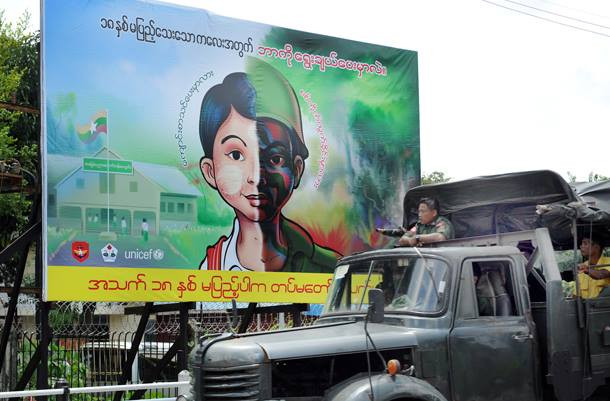The Army Has Released 68 Child Soldiers, Thousands Still Serving
Published: Sep 2, 2013 Reading time: 2 minutes Share: Share an articleIn August, the Burmese army Tatmadaw released 68 child soldiers including several tens of young adults recruited in their childhood. This welcome step was taken within a joint action plan of the Burmese government and the UN aimed at unconditional cease of military recruitment of children and their service in the army. According to the plan, which was signed in June 2012, the Tatmadaw is to release all child soldiers by this December. However, the analysts, especially Human Rights Watch, deem this scenario to be highly unlikely. Although there were 66 children freed last year and further 42 this summer, according to the UN, it does not demonstrate satisfactory progress with regard to the total estimated number of child soldiers and the children recruit procedures having been followed until today.

This spring, the International Labour Organization (ILO) published a study reporting 770 confirmed cases of child soldiers that have been documented in the last three years. However, it is estimated that the number of children serving in the military is as high as thousands of children. In the recent years, the total of the recruited children has been slightly falling, especially thanks to the ceasefire agreement signed between the government army and ethnic militias.
In spite of the fact that the Tatmadaw armed forces are controlled centrally and rigidly, it is being undermined by extremely low morale of the ranks caused by adverse living conditions, meagre and unreliable food rations, and inadequate ammunition and health-care delivery. These factors contribute to ever-increasing rate of desertions as well as to the necessity of constant recruit of new soldiers. Unofficial rationing system for the military officials remains dependent on the number of new recruits. Moreover, it is reported that some army members are thwarted in their attempt to leave the institution unless they find a replacement for themselves. This ‘recruitment strategy’ gives rise to appearance of civilian middlemen, who recruit children for the army.
Typically, child soldiers are sent to fight in the front line, they are used as human mine detectors or exploited as ancillary and supply workers; a certain part of them, mainly girls, are sexually abused. According to the information provided by Child Soldiers International, an overwhelming majority of child soldiers have not completed compulsory education, which is likely to hinder their successful re-integration into society, provided that the army demobilizes.
The Burmese child soldiers do not serve only in the Tatmadaw, but also in a lot of the above mentioned ethnic militias, though in a lower number. On one hand, children are conscripted by the Kachin Independence Army (KIO) which is still officially in a state of war with the government, on the other hand, they are also taken away by militias which have agreed on a ceasefire deal with the government and now they operate rather as frontier guards. The practices of particular militaries with regard to children differ substantially – some of them are actively seeking for their demobilization, others keep ignoring the problem.
Sources: www.bbc.com, www.hrw.org, www.child-soldiers.org



